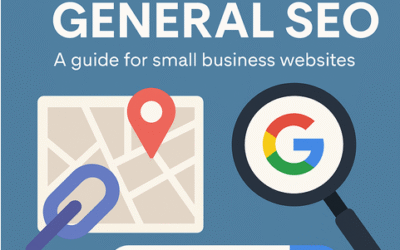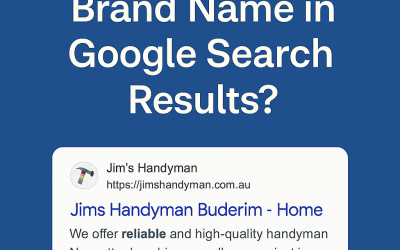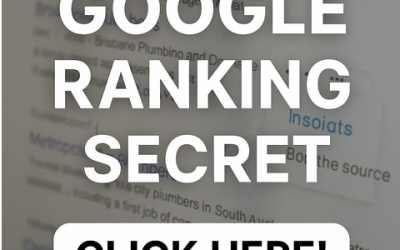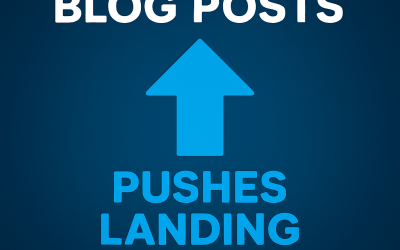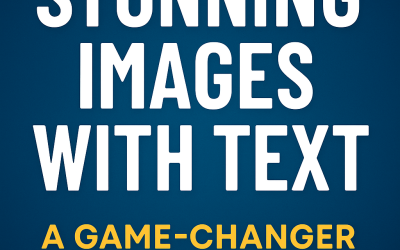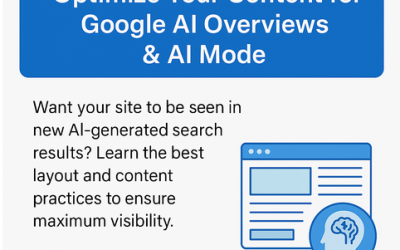How a Well-Optimised Featured Image Can Help You Stand Out in Google Results
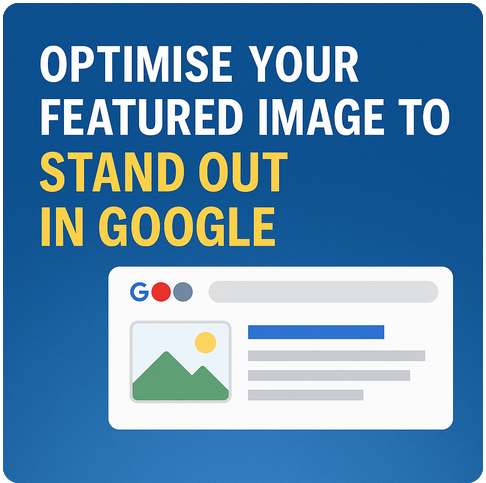
If you’re a small business owner working hard to rank higher on Google and increase visibility, you might be overlooking one of the simplest ways to stand out in search results:
Your page/posts featured image.
Yes — that one image can have a massive impact on how your website appears in Google, how clickable your listing is, and whether users engage with your page or scroll past.
Let’s unpack how it works and what you can do to optimise your featured images for better results.
What Is a Featured Image?
A featured image is the main visual you attach to a web page or blog post — and it often appears:
-
In Google search previews (especially on mobile)
-
When you share your page on social media
-
As a thumbnail in AI Overviews or discovery feeds
-
In image search results
-
And even in Google’s “People Also Search For” panels
It’s a chance to catch the user’s eye before they even visit your site.
Think of it like the cover of a book. If it’s done well, people want to click.
Why It Matters for SEO and Visibility
Google’s algorithm doesn’t just care about keywords anymore — it looks at the overall presentation and user experience of your site.
A well-optimised featured image can help by:
✅ Increasing your click-through rate (CTR) from search
✅ Supporting image-based search results and visibility
✅ Helping your site look more professional and trustworthy
✅ Improving shareability on platforms like Facebook and LinkedIn
✅ Giving AI-powered search results more data to work with (especially in Google Discover and SGE results)
If you’re trying to stand out among similar businesses in your area or industry, your featured image can be the difference between a click and a pass.
How to Optimise Your Featured Image (Step-by-Step)
✅ 1. Choose an Image That’s Visually Relevant
Use a clear, high-quality photo or graphic that reflects what the page is about. Avoid generic stock photos — they look inauthentic and are often overused.
If you’re a plumber, use an image of your team working.
If you’re a café, show your best-selling dish.
If you’re writing about SEO, include a simple graphic with a keyword chart or audit visual.
✅ 2. Name the File with Keywords
Before uploading, rename your image with a descriptive, keyword-rich filename.
Instead of:image1.jpg
Try:brisbane-cafe-breakfast-menu.jpg
orseo-consulting-sunshine-coast-featured.jpg
Google uses the filename as a small ranking signal — don’t waste it.
✅ 3. Fill in the Alt Text (Properly)
Alt text helps search engines understand what the image is, and it improves accessibility for screen readers.
Keep it short and accurate, like:
“Local plumber fixing blocked drain in Caloundra”
“Feature image showing café’s outdoor seating in Maroochydore”
Alt text is also indexed by Google Images — which is another traffic source for your site.
✅ 4. Use the Right Dimensions and Placement
Every platform is different, but a safe minimum is around 1200 x 630 px. Make sure the image is:
-
Not stretched or pixelated
-
Placed near the top of your page (usually just under the heading)
-
Lightweight — under 200KB where possible, to avoid slow loading times
✅ 5. Support It with Metadata (Optional Bonus)
If you’re using WordPress or similar platforms, you can add:
-
A title
-
A caption
-
Schema markup (e.g.
ImageObjectorArticle) to help Google recognise it as a featured image
You can also use Open Graph tags to control how it appears on Facebook, LinkedIn, etc.
Real-World Impact for Small Business Owners
Let’s say you’re a local accountant in Noosa. A well-optimised featured image showing your team with happy clients, labelled with keywords and embedded correctly, might:
-
Show up in Google Image Search
-
Be used in AI-generated previews
-
Catch more attention on mobile SERPs
-
Help your post get more shares on Facebook
That’s a lot of exposure — from one image.
Final Thoughts
If you’re trying to get more clicks, more customers, and more visibility from the same spot in Google…
Don’t just optimise the words on your page — optimise the image too.
✅ Make it relevant
✅ Make it visible
✅ Make it clickable
It’s a small change that can deliver big results.
And if you’re not sure how to check whether your images are working for you, or how to fix them — just reach out. I’ll take a look and give you some guidance.
Cheers,
Ashley
Author: Ashley Bryan
Recent Posts
- Why and How to Add Testimonials & Reviews to Your Website September 11, 2025
- Local SEO vs General SEO: Why “Plumber Brisbane” Ranks but “Plumber” Doesn’t August 20, 2025
- How to Get Your Brand Name (Not Just Your URL) to Show in Google Search Results August 11, 2025
